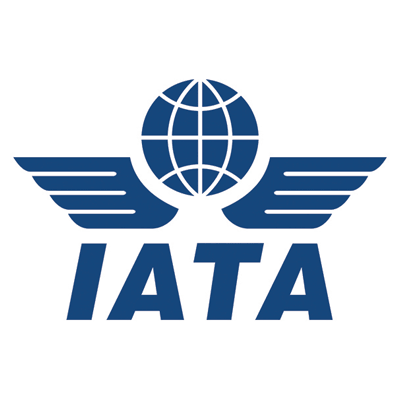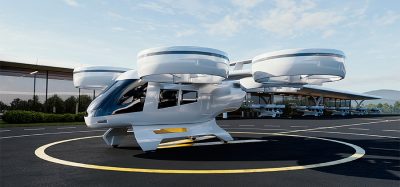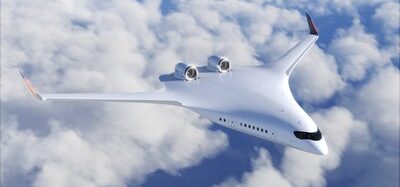Airline profitability improves with falling oil prices
- Like
- Digg
- Del
- Tumblr
- VKontakte
- Buffer
- Love This
- Odnoklassniki
- Meneame
- Blogger
- Amazon
- Yahoo Mail
- Gmail
- AOL
- Newsvine
- HackerNews
- Evernote
- MySpace
- Mail.ru
- Viadeo
- Line
- Comments
- Yummly
- SMS
- Viber
- Telegram
- Subscribe
- Skype
- Facebook Messenger
- Kakao
- LiveJournal
- Yammer
- Edgar
- Fintel
- Mix
- Instapaper
- Copy Link
Posted: 10 December 2014 | The International Air Transport Association
The International Air Transport Association announced an outlook for improved industry profitability in its Economic Performance of the Air Transport Industry report…


The International Air Transport Association (IATA) announced an outlook for improved industry profitability in its Economic Performance of the Air Transport Industry report. Airlines are expected to post a collective global net profit in 2014 of some $19.9 billion (up from the $18.0 billion projected in June). This looks set to rise to $25.0 billion in 2015.
Lower oil prices and stronger worldwide GDP growth are the main drivers behind the improved profitability.
Consumers will benefit substantially from the stronger industry performance as lower industry costs and efficiencies are passed through. The airline industry is highly competitive. After adjusting for inflation, average return airfares (excluding taxes and surcharges) are expected to fall by some 5.1% on 2014 levels and cargo rates are expected to fall by a slightly bigger 5.8%.
The expected $25 billion net post-tax profit represents a 3.2% margin. On a per passenger basis, airlines will make a net profit of $7.08 in 2015. That is up on the $6.02 earned in 2014 and more than double the $3.38 earnings per passenger achieved in 2013.
The return on invested capital (ROIC) is expected to grow to 7.0%. This is a substantial improvement on the 6.1% ROIC expected to be achieved in 2014.This is still 0.8 percentage points below the 7.8% weighted average cost of capital (WACC), so there is still some ground to cover before achieving sustainable margins.
“The industry outlook is improving. The global economy continues to recover and the fall in oil prices should strengthen the upturn next year. While we see airlines making $25 billion in 2015, it is important to remember that this is still just a 3.2% net profit margin. The industry story is largely positive, but there are a number of risks in today’s global environment—political unrest, conflicts, and some weak regional economies- among them. And a 3.2% net profit margin does not leave much room for a deterioration in the external environment before profits are hit,” said Tony Tyler, IATA’s Director General and CEO.
“Stronger industry performance is good news for all. It’s a highly competitive industry and consumers—travelers as well as shippers—will see lower costs in 2015 as the impact of lower oil prices kick in. Airline investors will see ROIC move closer to the WACC. And a healthy air transport sector will help governments in their overall objective to stimulate the economic growth needed to put the impact of the global financial crisis behind them at last,” said Tyler.
2015 Forecast Drivers
Oil Prices: Oil prices have fallen substantially in recent months and this is expected to continue into 2015 with the full-year average price expected to be $85/barrel (Brent). If that assumption is correct, it would be the first time that the average oil price has fallen below $100/barrel since 2010 (when oil averaged $79.4/barrel).
Fuel Prices: Jet fuel prices are expected to average at $99.9/barrel in 2015 for a total fuel spend of $192 billion which represents 26% of total industry costs. It is important to note that the impact of lower fuel prices will be realized with a time lag, due to forward fuel-buying practices. Improving fuel efficiency continues to be a priority for airlines. Fuel efficiency is estimated to have improved by 1.8% in 2014 and a further improvement is expected in 2015. Fuel efficiency improvements could be accelerated by reducing the 5% of wasted fuel burn as a result of airspace and airport inefficiencies.
Economic Growth: Global GDP is expected to grow by 3.2% in 2015, up from 2.6% in 2014. This will be the first time that global GDP has broken over 3.0% since 2010 (when global GDP grew by 4.1% in a post-recession bounce back), this time boosted by the fall in oil prices.
Passenger Trends: Passenger traffic is expected to grow by 7.0% in 2015 which is well-above the 5.5% growth trend of the past two decades. Capacity growth is expected to outstrip this slightly at 7.3%, pushing the passenger load factor to 79.6% (slightly down on the 79.9% expected for 2014). The fall in the price of fuel is expected to lead to cheaper airfares for consumers. After adjusting for inflation, average return air fares (excluding surcharges and taxes) are expected to fall by 5.1% to $458 in 2015. Total passenger numbers are expected to grow to 3.5 billion and passenger revenues are expected to grow to $623 billion.
Cargo Trends: Cargo volumes are expected to grow by 4.5% in 2015 (slightly ahead of the 4.3% growth expected for 2014). The air cargo business has faced weak markets and increasing competition since 2011. There has been an uptick in demand recently but cargo remains a tough business. The real cost of transporting goods in 2015 is expected to fall by 5.8%. In total, some 53.5 million tonnes of air cargo is expected to be flown in 2015. Total cargo revenues are expected to rise to $63 billion, but that is still some 5% lower than in 2010.
Regional Trends
All regions are expected to report improved net profitability in 2015 over 2014. However, there are stark differences in profitability among the regions. Current and forward-looking industry financial assessments should not be taken as reflecting the performance of individual airlines, which can differ significantly.
North America: The strongest financial performance by far is being delivered by airlines in North America. Net post-tax profits are the highest at $13.2 billion next year (up from $11.9 billion in 2014). That represents a net profit of $15.54 per enplaned passenger, which is a marked improvement from just three years earlier. Net profit margins forecast at 6% exceed the peak of the late 1990s. This improvement has been driven by consolidation, helping to raise load factors (passenger + cargo) to 65% this year, lower fuel prices and ancillaries, which together push breakeven load factors down below 60% next year.
Europe: European airlines continue to struggle as evidenced by the highest breakeven load factors among all regions (64.7%). European airlines compete vigorously in the continent’s open aviation area. But they are hampered by high regulatory costs, infrastructure inefficiency and onerous taxation. As a result, and despite the industry in the region achieving the second highest load factor, financial performance has been poor. Net profits of $4 billion next year (up from $2.7 billion in 2014) represent only $4.27 per passenger and a net profit margin of 1.8%.
Asia-Pacific: Airlines in the Asia-Pacific region are expected to achieve a net profit of $5.0 billion in 2015 (up from $3.5 billion in 2014) for a 2.2% net profit margin. That translates into $4.30 per passenger. Some strengthening of cargo markets, particularly important in this manufacturing region, plus lower fuel costs, are expected to drive the moderate improvement on 2014.
Middle East: Middle East airlines have one of the lowest breakeven load factors (58.6%). Average yields are low but unit costs are even lower, partly driven by the strength of capacity growth. Passenger capacity is expected to expand by 15.6% in 2015 (up from 11.4% in 2014). Post-tax net profits are expected to grow to $1.6 billion in 2015 (up from $1.1 billion in 2014). This represents a profit of $7.98 per passenger and a net profit margin of 2.5%.
Latin America: Latin American airlines have faced a mixed environment. Weak home markets have hampered performance, but a degree of consolidation and some long-haul success is expected to boost net profits to $1 billion in 2015 (up from $700 million in 2014). That would be a profit of $3.53 per passenger and a net profit margin of 2.6%.
Africa: Africa is the weakest region, as in the past 2 years. Profits are barely positive ($200 million in 2015 which is an improvement on the break-even performance in 2014), and represent just $2.51 per passenger. Breakeven load factors are relatively low, as yields are a little higher than average while costs are lower. However, few airlines in the region are able to achieve adequate load factors, which are the lowest among the regions by almost five percentage points. Performance is improving, but slowly.
Connectivity, Jobs, Taxes and Environmental Performance
Despite relatively weak profitability, the airline industry continues to add value to its consumers, to the wider economy and to governments:
- Aviation’s global connectivity now spans 16,161 city-pairs (2014), which is nearly double the number in 1994. This connectivity is a catalyst for economic benefits both for users and the wider economy. Over that same period, airlines have halved the cost of air transport, after inflation, which has been a major stimulus for trade, tourism, and foreign direct investment associated with global supply chains.
- The number of aviation jobs is rising although the pace of hiring is expected to taper slightly in 2015. Total direct employment in the sector is expected to reach 2.45 million (up 1.5% on 2014). The total airline payroll in 2015 is expected to reach $149 billion (up from $142 billion in 2014). Average unit labor costs are expected to fall by 2% in 2015 as productivity per employee improves by 4.8% (almost double the 2.5% improvement in 2014). Airline employees are also extremely productive for the economies in which they work, generating gross value added (GVA – which is the company level equivalent to GDP) of $108,610 per employee in 2015 (up 6.3% on 2014).
- The industry tax bill is expected to grow to $125 billion in 2015. That is a 7.2% increase on 2014.
- Airlines’ environmental performance continues to improve. Airlines are expected to use some 282 billion liters of fuel in 2015. In doing so, the industry is expected to emit 751 million tonnes of carbon. While that is a 5.1% increase on the previous year, it is decoupled from the 6.8% (ATK) increase in overall capacity to meet consumer demand. Investments in new aircraft are a major driver of fuel efficiency improvements. In 2015 airlines are expected take delivery of 1,700 new aircraft worth $180 billion. About half of these are expected to replace less fuel-efficient older aircraft.
The industry remains committed to achieving carbon-neutral growth from 2020. This is in addition to a 1.5% average annual improvement in fuel efficiency to 2020 and complements the long-term goal of cutting net emissions in half by 2050 (compared with 2005 levels).
Detailed Economic Performance of the Airline Industry report >>

















